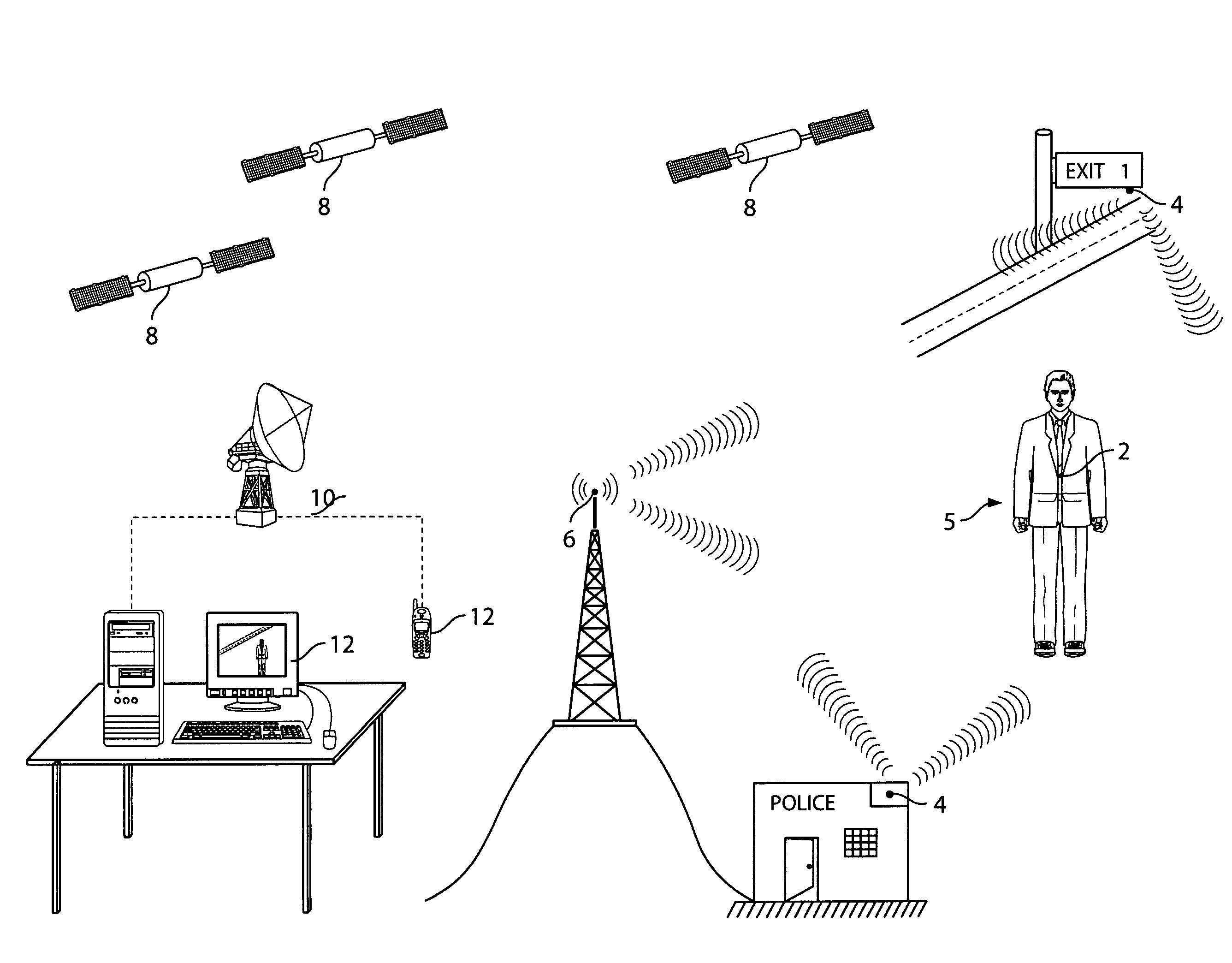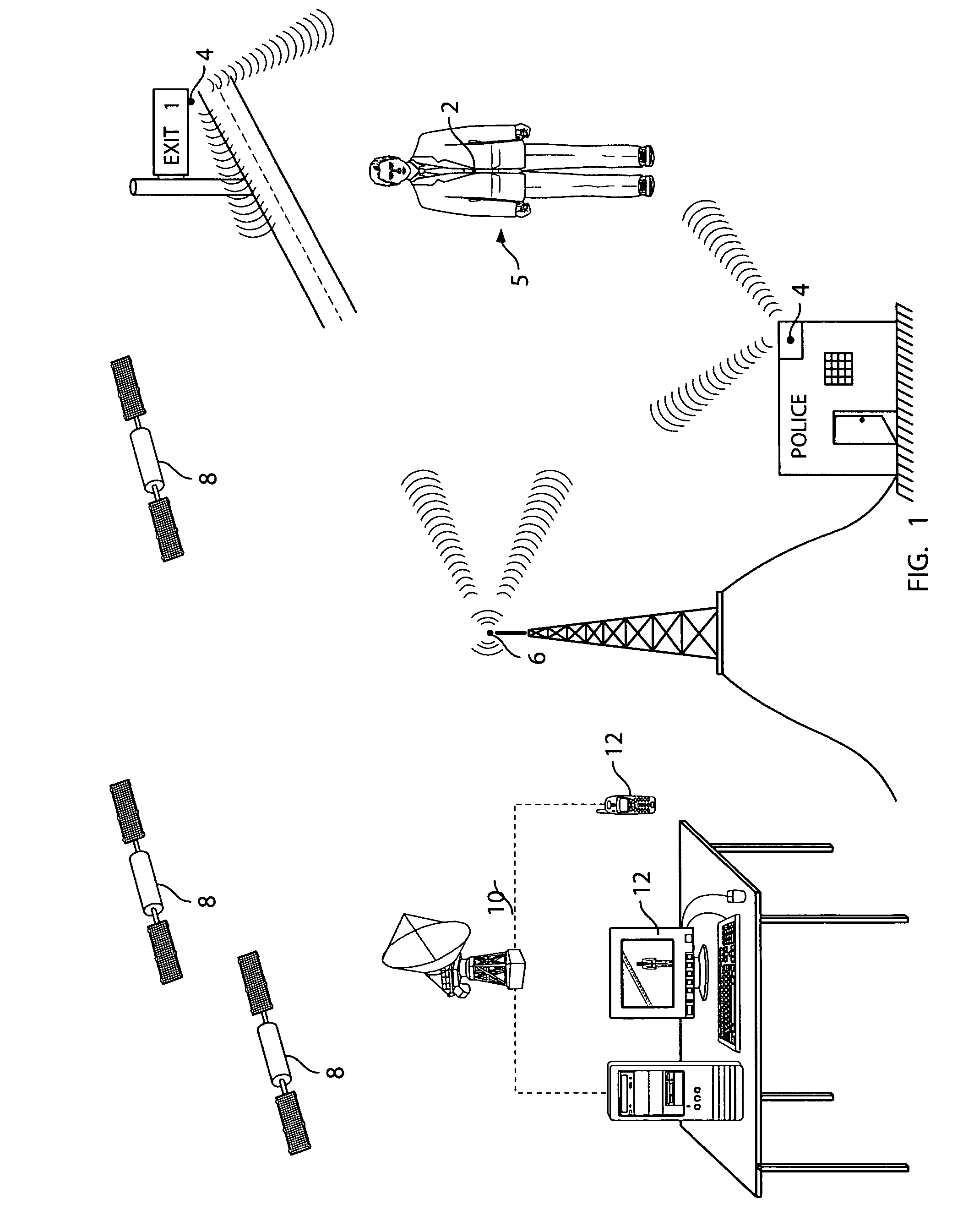Ingestible tracking and locating device
a tracking and locating device technology, applied in the field of ingestion tracking and locating devices, can solve the problems of limiting the usefulness of subcutaneous implanted devices for military, intelligence and personal protection applications, low acceptance rate of subcutaneous implanted devices among potential users, and additional uncomfortable dental procedures to repair or remove devices
- Summary
- Abstract
- Description
- Claims
- Application Information
AI Technical Summary
Benefits of technology
Problems solved by technology
Method used
Image
Examples
Embodiment Construction
Example of the System
[0023]FIG. 1 illustrates the general principle of the invention. It is noted that variations of the invention may include different means for locating the subject. As such, the invention is not limited to those components shown in FIG. 1. Instead, the components of FIG. 1 may vary depending upon the actual type of locating and / or communication system or systems used by tracking and locating system (e.g., GPS, wireless, RFID, telephone, or a public network such as the internet).
[0024]As illustrated, the system generally includes a temporary or ingestible tag 2, which is suited for swallowing or non-surgical placement within the body where the tag contains data unique to the subject S. The system also includes a component to determine the location of the tag 2. In the illustrated example, this component is a locator 4 which will generally enable the system to determine the location of a particular tag 2 and communicate with the system so that a person or entity ma...
PUM
 Login to View More
Login to View More Abstract
Description
Claims
Application Information
 Login to View More
Login to View More - R&D
- Intellectual Property
- Life Sciences
- Materials
- Tech Scout
- Unparalleled Data Quality
- Higher Quality Content
- 60% Fewer Hallucinations
Browse by: Latest US Patents, China's latest patents, Technical Efficacy Thesaurus, Application Domain, Technology Topic, Popular Technical Reports.
© 2025 PatSnap. All rights reserved.Legal|Privacy policy|Modern Slavery Act Transparency Statement|Sitemap|About US| Contact US: help@patsnap.com



